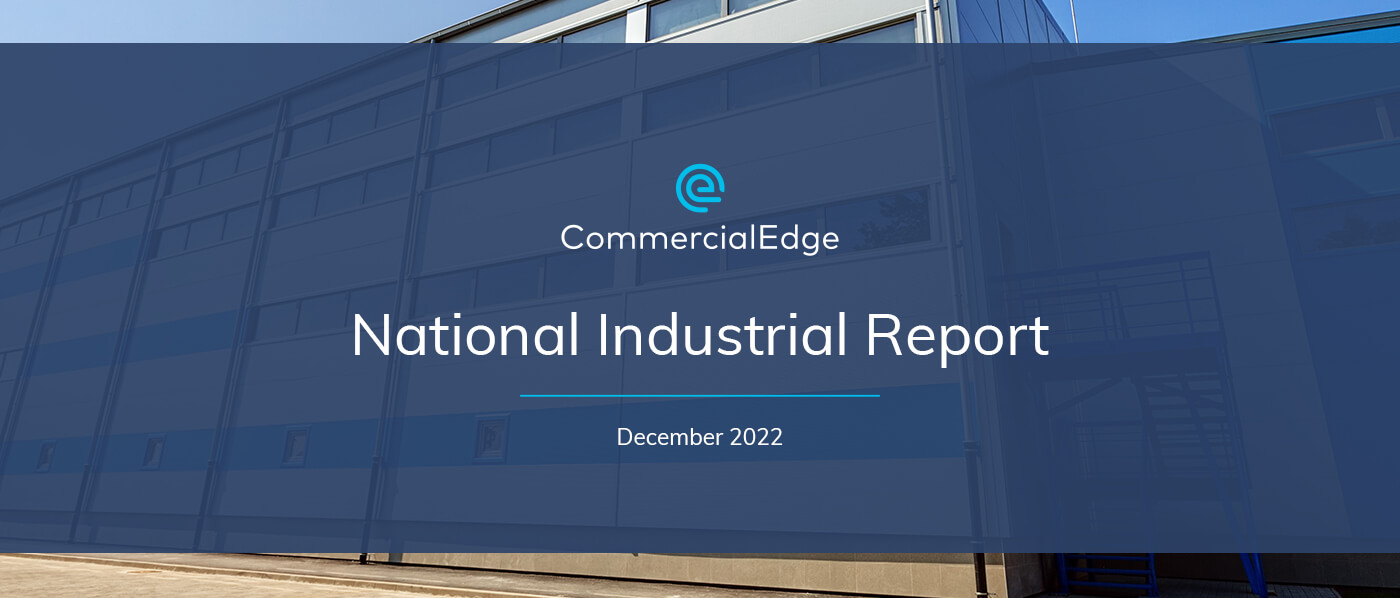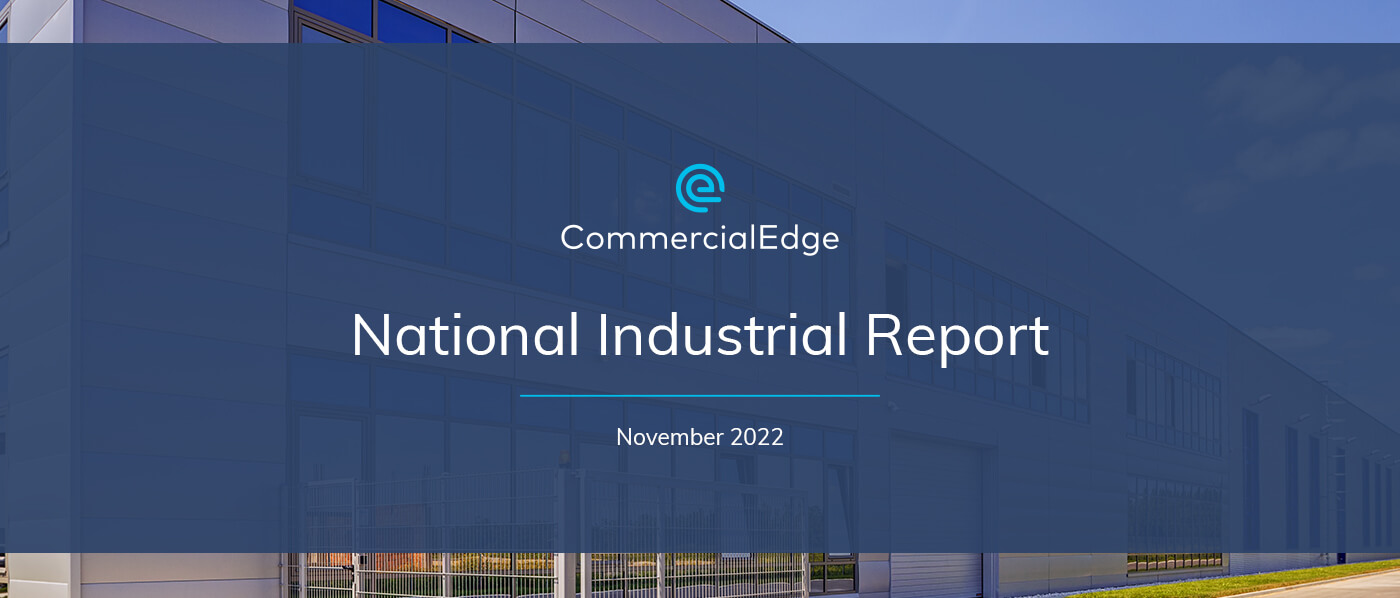Key takeaways:
- The average U.S. office listing rate stood at $37.94 per square foot, down 0.1% year-over-year
- Up 150 basis points year-over-year, the national vacancy rate rested at 16.3%
- Under-construction office space totaled 135.5 million square feet in October
- $76.3 billion in office sales were closed in the first 10 months of the year
- At $940 per square foot, San Francisco claims highest office sales price in the U.S.
- Midwest posts lowest office sales price with Twin Cities’ $123 per square foot
- Atlanta and Houston post highest vacancy rates, with both north of 20%
- Manhattan still leads asking rents with $74.75 per square foot
Although many industry players and occupiers hoped for 2022 to be the year when the office market levels out and maybe even starts to recoup pandemic losses, that stabilization did not materialize. Wider economic shifts, the Federal Reserve’s repeated interest rate hikes, the further solidification of work from home and office setups and increasing office footprint reductions by companies meant that vacancy rates continued to rise throughout the year, while rent growth remained patchy.
Work-from-home solidifying itself, plus broader economic uncertainty, are set to continue the stress on the office industry as we enter the new year.
Peter Kolaczynski, CommercialEdge Senior Manager
Listing Rates & Vacancy: Listing Rates Register Significant Growth Only in Select Market
With large swaths of the office-using sector embracing remote and hybrid work at least partially, demand for office has continued to decline in most markets since the onset of the pandemic. Not only that, but many companies have already reduced their office footprints, while others have concrete plans to do so in the near future.
As a result, the national vacancy rate was 150 basis points higher than in October 2021, closing last month at 16.3%.
In fact, over the past 12 months vacancy rates rose in 86 of the 120 markets covered by CommercialEdge, including in 22 of the 25 most important ones. Of the leading U.S. office markets, the sharpest vacancy rate increases were recorded in Portland (+400 bps) and San Francisco (+390 bps). On the other end of the spectrum, only three of the country’s 25 leading markets saw vacancies decline during the same time period: Boston, Charlotte and Washington, D.C.
Top Listings by Metro Area: October 2022
Across the top 50 U.S. office markets, the average full-service equivalent listing rate stood at $37.94 in October, down 0.1% year-over-year. Considering the significant vacancy declines recorded in Charlotte and Boston, it was to be expected that the two markets would also have some of the most robust listing rate growths in the U.S.
Specifically, the increase in Charlotte’s and Boston’s listing rates were among the three highest in the U.S. In fact, Charlotte and Boston were two of only four markets where listing rates appreciated by double digits over the past 12 months, joined by San Diego and Miami. Growth in these locations was driven by robust life science sectors and increases in in-migration of workers and companies to Sunbelt markets.
Supply: Sunbelt Adds Space as Firms Seek Headquarters
Nationally, 135.5 million square feet of office space was under construction at the end of October, the equivalent of 2.1% of existing stock. Another 6.1% are in the planning stages, but it remains to be seen if they will indeed materialize considering the increased cost of construction materials, supply chain issues, the significant interest rate hikes handed down by the Fed, the increased cost and difficulty of financing and a potential recession.
Although office construction is nowhere near pre-pandemic levels, development has continued over the past 30 months. With the overwhelming majority of office projects that broke ground before the pandemic having been delivered, 80% of the current construction pipeline consists of developments that kicked off after April 2020. Much of the current national construction pipeline is driven by occupiers’ flight to quality and by companies relocating to or expanding into Sunbelt markets.
Specifically, of the 135.5 million square feet of office space currently under construction, 125.7 million square feet are represented by A and A+ projects, with class B spaces accounting for less than 10 million square feet.
Asset Class Price Per Square Foot
Driven by heavy migration into the region over the last few years, Sunbelt markets — especially in the Southeast — have been among the most active when it comes to new office development.
Charlotte and Miami have especially attracted firms looking to relocate or expand, with the former breaking ground on the equivalent of 7.4% of its stock since the start of this year alone. Although some projects have been scrapped over the past few months, the city’s development pipeline is second only to Austin, a market where office is undergoing a veritable boom, with projects currently under construction set to increase its footprint by 8.1%.
Transactions: National Sales Volume Surpasses $75 Billion
CommercialEdge has recorded $76.34 billion in office transactions between January 1 and October 31. Of this, Manhattan sales represented $5.56 billion, while the Bay Area, Boston, New Jersey and Washington D.C. totaling about $4.1 billion in sales each.
Four more markets surpassed $3 billion in sales, with some expected to surpass the $34 billion marker before the year is out. Among them is Dallas, which had a year-to-date sales volume of $3.94 billion at the end of October. Overall, of the country’s leading 25 office markets, only four had sales volumes under $1 billion.
Year-to-Date Sales (Millions)
Among the hottest office markets for transactional activity, Boston has been the third most active market this year by sales volume, largely driven by life sciences. The two largest transactions in the market were in Kendall Square, both with life science elements. Alexandria sold 70% of its stake in 100 Binney, a recapitalization that valued the building — with tenants like Meta and Bristol Myers Squibb alongside biotech firms — at more than $1 billion. Down the street, Biogen sold its property at 300 Binney for $603 million to Boston Properties in a sale-leaseback.
Although Boston and the Bay Area posted year-to-date sales prices of over $400 per square foot and Manhattan at well over $800 per square foot, the national year-to-date price per square foot clocked in at $261.
Western Markets: San Francisco Remains Priciest Sales Market
San Francisco continues to lead western markets in terms of asking rents, posting a rate of $66.75 per square foot in October — more than double the national average. While asking rents remained unchanged month-over-month, San Francisco’s vacancy rate declined a minute 0.18% compared to September figures. However, year-over-year, the local vacancy rate increased nearly 4%, resulting in a 19.5% vacancy rate at the end of October.
In terms of rent rates, the Bay Area followed with $55.64 per square-foot, up a near-negligible 0.04% year-over-year. But vacancies rose 0.30% during the same timeframe, bringing the Bay Area’s vacancy rate to 16%.
San Diego’s life sciences sector continued to keep asking rents higher than those in Los Angeles. Specifically, double-digit rent growth in San Diego brought rents to a $43.91 per square foot asking rate, while Los Angeles stood at $42.70 per square foot. Moreover, as vacancies in Los Angeles rose nearly 2% year-over-year, San Diego’s 1.16% increase allowed the city to post a lower vacancy rate of 14.53%, the lowest among leading Western markets.
At the same time, Denver was second only to San Francisco in terms of vacancies, with Colorado’s main office market at 18.48%. Asking rents were also declining, decreasing 0.92% year-over-year to close October at $30.02 per square foot. However, this was one of the highest rent rates in the West outside California, with Seattle’s $37.18 per square foot, the highest.
West Regional Highlights
San Francisco was the leader of sale prices as well, posting a $940 per square foot sales price for the first ten months of the year — the nation’s highest. Its closest rival was Manhattan with a price per square foot nearly $100 lower. Seattle sported the West’s second-highest sale price at $573 per square foot, followed by the Bay Area’s $442. Conversely, at $191 per square foot, Portland had one of the lowest sales prices rates among the country’s top office markets.
In terms of sales volumes, the Bay Area led Western markets with $4.18 billion in office sales year-to-date, followed by Los Angeles with $3.1 billion and Denver with $3.03 billion.
Midwestern Markets: Twin Cities Post Lowest Sales Price of the 25 Top Office Markets
Although Chicago had one of the more robust sales markets earlier this year, transactional activity slowed somewhat. Thus, Chicago had the tenth largest sales volumes in the U.S. at $2.88 billion. But the Windy City also had one of the lowest prices per square foot among the country’s 25 most important markets, with its year-to-date sale price at $198 per square foot.
However, the Twin Cities actually had the lowest sales price among the top U.S. office markets, closing October at $123 per square foot year-to-date. The Minneapolis – St. Paul market was also one of five of the country’s top markets where sales had yet to reach $1 billion, totaling $840 million over the first ten months of the year.
The Midwest’s two leading markets also had some of the smallest construction pipelines in the U.S. on a percentage-of-stock basis. Chicago was developing the equivalent of just 1% of its existing footprint at the end of October, while the Twin Cities were expanding by a mere 0.5%. In fact, the Twin Cities’ under construction pipeline was also among the smallest overall, even in terms of square footage, with just 569,000 square feet worth of development with shovels in the ground.
Midwest Regional Highlights
Asking rates in the two markets were fairly close in value, although Chicago still stayed ahead at $27.55 per square foot, down 0.11% year-over-year. Rents in the Twin cities declined at a sharper rate, pulling the local asking rent down to $25.62 per square foot. These were, in fact, some of the lowest asking rents among the country’s top office markets, with only Orlando’s $23.67 per square foot lower.
As for vacancies, Chicago’s 19.74% was the country’s third-highest office vacancy rate, up 1.19% over year-ago figures. Vacancies may have been lower in the Twin Cities, but here too, the trend was one of declining occupancies.
Southern Markets: Houston and Atlanta Vacancy Rates Highest Among Leading U.S. Office Markets
Vacancies rose in the South too, with Houston undergoing the sharpest increase that also resulted in the highest vacancy rate across the U.S. at 25.16%, while Atlanta’s 21.08% was the second highest. However, the South also posted some of the lowest vacancy rates nationwide with Charlotte’s 12.50% and Miami’s 12.72%.
Similarly, Charlotte and Miami, joined by Orlando, also logged some of the highest rent increases over the past 12 months. Other leading markets in the South registered milder decreases, like Houston’s 0.71% decline, or logged small increases in asking rents, such as Nashville’s 0.21% or Atlanta’s 2.51%.
South Regional Highlights
Sale prices in the South could not compete with those of leading Western and Northeastern markets. Miami claimed the highest rates at $390 per square foot year-to-date, followed by Austin’s $387 per square foot and Charlotte’s $322 per square foot. Conversely, some of the lowest sales prices were also logged in the South as Houston’s $160 per square foot and Orlando’s $177 per square foot rates among the three lowest.
But large sales volumes were still reached in the region: Washington, D.C. totaled $4.11 billion in year-to-date sales for the fifth highest sales volume. It was immediately followed by Dallas and Atlanta with sales totals of $3.94 billion and $3.45 billion. And, despite one of the lowest prices per square foot among the country’s leading office markets, Houston still amassed a $2.46 billion total volume. On the other hand, Tampa and Orlando had two of the five lowest sales volumes, logging $769 million and $581 million, respectively.
Northeastern Markets: Manhattan’s Asking Rents Highest in the Country
Nationally, Manhattan, Boston and New Jersey had three of the five most robust sales markets, with all three closing more than $4 billion in office transactions year-to-date. Manhattan remained the national leader and the only market to go north of $5 billion, reaching a total sale volume of $5.56 billion. At the same time, Boston had the third-largest sales volume at $4.18 billion and New Jersey totaled $4.13 billion, the fourth largest.
On the other end of the spectrum, Brooklyn was one of five leading markets where year-to-date office sales remained under $1 billion, totaling $767 million. While Philadelphia inched over that threshold to reach $1.1 billion in office sales, it had one of the lowest year-to-date sales prices at $190 per square foot. Conversely, Manhattan remained one of the most expensive office markets, with assets trading at $845 per square foot, the second-highest rate, while Brooklyn’s $532 per square foot sale price was the fourth highest.
Northeast Regional Highlights
Manhattan asking rents remained the most expensive across the country at $74.75 per square foot. Although Manhattan rates were trending down, barring any radical market shifts, it will likely remain the priciest office market for occupiers for some time yet. While Brooklyn rates trended down overall, Boston’s life science market helped lift rents over the past 12 months. Thus, the market closed October at $40.20 per square foot, almost on par with Austin and Washington D.C.
And although New Jersey commands some of the highest industrial rents in the U.S., office rates here were on the lower end of the pricing scale at $33.15 per square foot. Philadelphia was not far behind at $30.76, but in terms of vacancy rates, it had one of the lowest at 14.22%, with only Boston’s rate lower on the Eastern seaboard. Manhattan’s vacancy rate stood at 14.62%, rising 3.5% year-over-year. Brooklyn also underwent a comparable increase in vacancies, but closed October at nearly 20% vacant.
Office-Using Employment: Finance Wage Growth Lags Other Sectors
Office-using sectors of the labor market added 46,000 jobs in October, increasing 3.6% over the last 12 months, according to the Bureau of Labor Statistics. Year-to-date, office-using sectors have added a total of 910,000 jobs.
After increasing rapidly in the first half of 2021 — peaking at 7.8% year-over-year in March — wage growth in the financial activities sector has withered in the last 18 months. In October, the average wage in the financial activities sector grew just 3.8% year-over-year. This is below the wage growth in the overall labor market (4.7%) and two other office-using sectors, with the information sector increasing 6.4% and professional and business services growing 5.0%.
Wage growth is likely to continue across all sectors in the near term because, despite recent gains, inflation-adjusted wages have fallen this year, with the consumer price index sitting above 8.0% for many months. A tight labor market will necessitate further increases if employers wish to attract and retain talent.
Office-Using Employment Growth by Sector
Trends & Industry News: Rate Increases Another Challenge for Office
In an effort to combat inflation levels not seen in nearly 40 years, the Federal Reserve has raised interest rates 375 basis points since March. For an office market already facing the headwinds of remote work and corporate downsizing, rate increases have added another challenge that will hinder the new-supply pipeline and transaction deal flow.
On top of volatility in material costs and labor shortages, increasing debt costs make deals for new office supply increasingly difficult to pencil out. Build-to-suit or pre-leased properties will still get financing, but not much else. We expect some office projects to be paused or canceled in 2023 as the market adjusts to the new conditions.
Some developers may even look at alternative uses for plots of land they are developing. Last month, CIM Group submitted paperwork to build a 46-story apartment property in downtown Oakland where it had previously planned to construct an office tower.
Lenders are becoming more selective given market conditions, and when they do originate loans for commercial real estate, the multifamily and industrial sectors are preferred over office. Buyers are now looking for discounted prices, but so far sellers are hesitant to reduce them. The bid-ask spread on office properties will likely grow in coming months and deal flow could slow to a trickle.
Sales Price Per Square Foot
For investors that have recently reached the end of their hold period, it is an especially tricky time. While some may be tempted to hold and reassess until rates decrease, that may take a few years, and owners may be holding onto properties with worse lease situations than they have today.
Some of these challenges may ease when inflation cools, and rate hikes taper off. Right now, investors, developers and debt markets are unsure how far the Fed will go with rate increases and when a recession may hit. Once rates stabilize, deal flow and loans for new construction may increase as investors and developers have more certainty about debt costs.
However, by that point the federal funds rate may be higher than it has been in two decades. Combined with the other challenges impacting the office sector since the onset of the pandemic, we expect that deals may only get done for well-positioned, high-quality assets. Additionally, we expect an increase in office space in mixed-use properties as a means to diversify income streams and reduce risk.
Download the PDF report to view more, including the map for office-using employment growth.

You can also see our previous office reports.
Methodology
This report covers office buildings 25,000 square feet and above. CommercialEdge subscribers have access to more than 14,000,000 property records and 300,000 listings for a continually growing list of markets.
CommercialEdge collects listing rate and occupancy data using proprietary methods.
- Listing Rates — Listing Rates are full-service rates or “full-service equivalent” for spaces that were available as of the report period. CommercialEdge uses aggregated and anonymized expense data to create full-service equivalent rates from triple-net and modified gross listings. Expense data is available to CommercialEdge subscribers. National average listing rate is for the top 50 markets covered by CommercialEdge.
- Vacancy — The total square feet vacant in a market, including subleases, divided by the total square feet of office space in that market. Owner-occupied buildings are not included in vacancy calculations.
- A and A+/Trophy buildings have been combined for reporting purposes.
Stage of the supply pipeline:
- Planned — Buildings that are currently in the process of acquiring zoning approval and permits but have not yet begun construction.
- Under Construction — Buildings for which construction and excavation has begun.
Office-Using Employment is defined by the Bureau of Labor Statistics as including the sectors Information, Financial Activities, and Professional and Business Services. Employment numbers are representative of the Metropolitan Statistical Area and do not necessarily align exactly with CommercialEdge market boundaries.
Sales volume and price-per-square-foot calculations for portfolio transactions or those with unpublished dollar values are estimated using sales comps based on similar sales in the market and submarket, use type, location and asset ratings, sale date and property size.
Stay current with the latest market reports and CRE news
Latest Posts
Recent Reports
Despite Record New Supply, National Industrial Vacancy Dips Below 4%
More than 742 million square feet of industrial space was under construction at the end of November as demand continues to outstrip supply.
Tech Sector Downsize Further Challenges Office Recovery
The average listing rate for office space stood at $38.06 in November, while vacancies rested at 16.2% across the top 50 U.S. office markets.
Driven by Shipping and Logistics, National Development Pipeline Nears 714 Million Square Feet
National industrial in-place rents averaged $6.95 per square foot, up 5.8% year-over-year as demand remains strong





